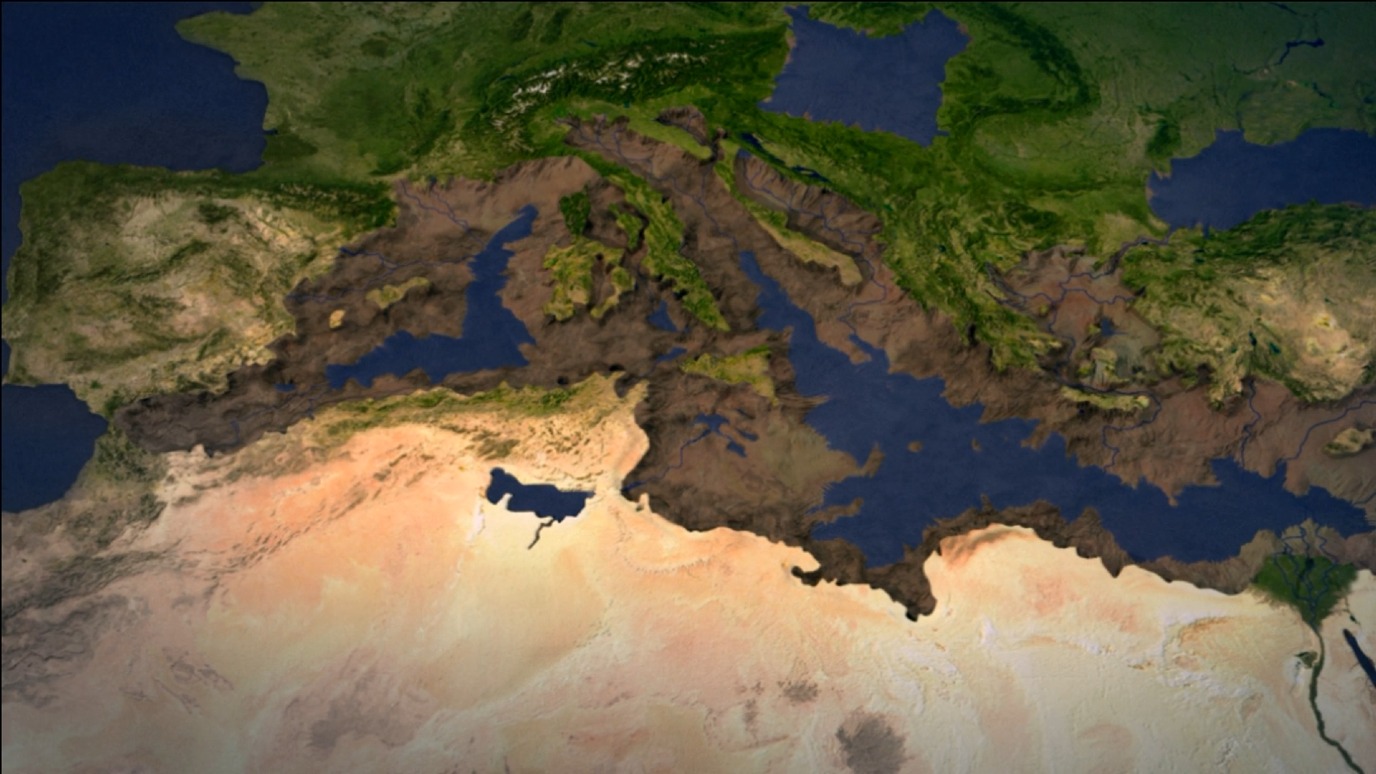How the once-dry Mediterranean Sea was filled with water
While the dramatic Zanclean megaflood from the Atlantic Ocean is known to have filled the Mediterranean basin around 5.3 million years ago, a new study published in Science Advances sheds light on what preceded it. Using high-resolution landscape evolution models, researchers showed that the Mediterranean Sea began filling long before the Atlantic Ocean breached.

The Messinian Salinity Crisis, which began around 6 million years ago, is considered one of the most extreme environmental events in Earth's recent history. As the Mediterranean Sea was largely cut off from the Atlantic Ocean, vast salt deposits formed and sea levels fell dramatically, transforming the basin into a deep, salty desert.
Thresholds
Yet, the basin began filling with water even before the dramatic megaflood from the Atlantic Ocean. The freshwater influx from rivers and rainfall from surrounding regions, particularly the Paratethys (modern-day Eastern Europe and Central Asia), slowly overtopped natural thresholds like the Bosporus and flowed into the desiccated basin.
The process unfolded over a period of more than 200,000 years, and because it was closely linked to the regional climate, the water level fluctuated by more than a kilometer between wetter and drier climate phases. "The recharge didn't happen all at once," says lead researcher Dr. García-Castellanos (Geociencias Barcelona - CSIC). "It was a dynamic process, driven by climate, erosion, and river connections—long before the Atlantic mega-flood."
Co-author Dr Dan V. Palcu (GeoEcoMar & Utrecht University), who developed the Paratethys drainage model, added: 'aratethys acted like an elevated water source. As erosion cut deeper spillways, more water started pouring into the Mediterranean, initiating a complex and unstable refill phase.'
This new model helps resolve long-standing geological mysteries, including the presence of shallow brackish deposits at both elevated and deep sites, and the presence of non-Mediterranean microfossils throughout the basin.
Microfossils
Co-author Dr. Francesca Bulian, a micropaleontologist specializing in the Messinian salinity crisis, explains: "Decades ago, microfossils were the first to tell us this story. They provided early evidence for a strong influx of Paratethyan fauna into the basin. Now we understand the mechanism as well."
More news
-
16 December 2025
How AI can help people with language impairments find their speech
-
18 November 2025
What about the wife beater? How language reinforces harmful ideas
-
03 November 2025
Menopause in perspective: How the media influences our perception
